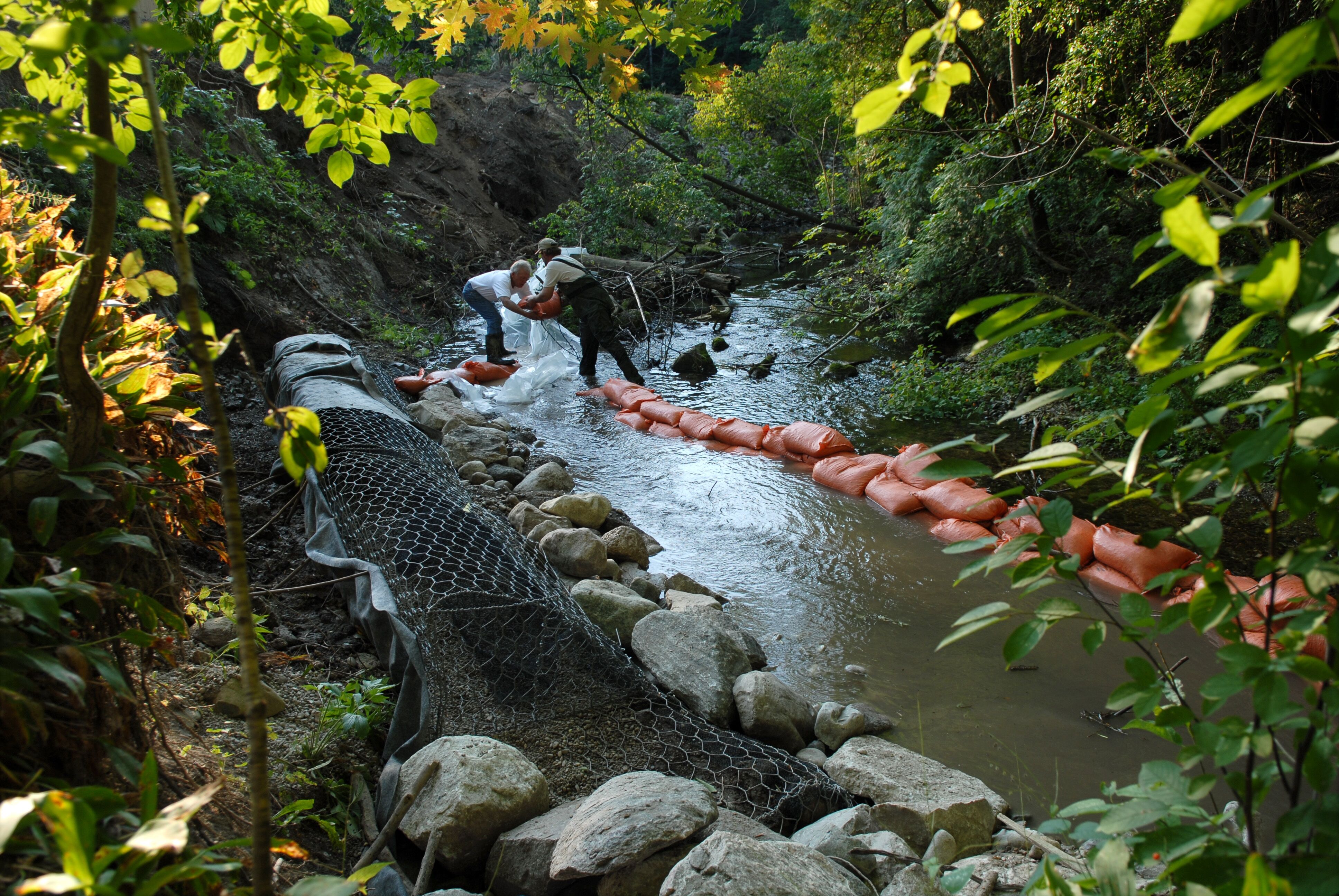Class Environmental Assessment
The need for flood and erosion control
Under natural conditions, all lands along watercourses and shorelines are subject to periodic flooding. Bank/bluff instability and erosion along watercourses and shorelines also occur due to natural causes. Land use practices have tended to aggravate flood and erosion problems. These practices include deforestation, agricultural land clearing, urbanization, and the filling and draining of wetlands.
Flooding and bank instability/erosion can result in critical problems such as:
- Risk to human life
- Property damage
- Damage or disruption of various corridors including roads, highways, bridges, pipelines, storm and sanitary sewers, telephone and hydro lines etc.
- Sedimentation of watercourses and coastal wetland areas
- Degradation of aquatic habitats, such as fish spawning grounds
- Loss of fertile soil and the destruction of terrestrial vegetation and associated habitat resources
- Loss of natural shoreline protective features such as beaches, berms and dunes
- Imbalances in natural processes which provide aquatic and terrestrial habitat
- Personal hardship and severe social disruption
- Loss of cultural features such as bridges, mills and houses
To prevent and control flooding and erosion, Conservation Authorities carry out remedial projects such as preventing the entry of floodwater to a specific site and stabilizing channel slopes.
Class Environmental Assessment for Remedial Flood and Erosion Control Projects
The Class Environmental Assessment for Remedial Flood and Erosion Control Projects (Class EA) establishes a planning and approval process for a variety of remedial flood and erosion control projects that may be carried out by Conservation Authorities. The most current Class EA was approved on February 22, 2024.
The Class EA sets out procedures and environmental planning principles for Conservation Authorities to follow to plan, design, evaluate, implement and monitor a remedial flood and erosion control project so that environmental effects are considered as required under the Environmental Assessment Act. This Class EA allows Conservation Authorities to undertake these projects without applying for formal approval under the Environmental Assessment Act, on the condition that the planning and design process outlined in the Class EA is followed and all other necessary federal and provincial approvals are obtained.
While the 2013 Class EA remains the most current, a number of administrative amendments were made to ten Class EAs in Ontario by the Ministry of the Environment, Conservation and Parks in 2020. These amendments were made to update terminology and create consistency amongst the Class EAs they relate to the title of the final notices that are issued upon completion of the Class EA process. Details on the administrative amendments which affected the Class EA for Remedial Flood and Erosion Control Projects can be found here. These amendments will be incorporated into an updated Class EA in the near future.
Five Year Review Report
As part of monitoring and reporting conditions for approval of the Class Environmental Assessment for Remedial Flood and Erosion Control Projects, Conservation Ontario must submit a Five Year Review Report to monitor the effectiveness of the Class EA process and to ensure the Class EA remains current and relevant. The Five Year Review Reports are prepared in a format which are similar to and combines with the Annual Effectiveness Monitoring Report in every fifth year. The next Five Year Review Report (2022-2026) is due to the Province by the end of January 2027.
The most recent Five Year Review Report (2017-2021) was submitted to the Ministry of the Environment, Conservation and Parks on January 25, 2022. Unlike past Five Year Review Reports, this report did not include proposed amendments to the 2002 Class EA (Amended June 2013). This is because a set of amendments for the Class EA was still under review with the Ministry of the Environment, Conservation and Parks at the time the Five Year Review Report was submitted.
Annual Effectiveness Monitoring Report
The 2024 Annual Effectiveness Monitoring Reportfor the Class Environmental Assessment for Remedial Flood and Erosion Control Projects fulfills Conservation Ontario’s requirement to monitor the effectiveness of the Class EA process to ensure it provides for sound environmental planning and remains current and relevant. The annual report addresses projects initiated, planned, and/or implemented during that year.
